My original ramp leaf sriracha is one of the best recipes for ramp leaves I know. It makes a spicy, funky, addictive green sriracha sauce you can put on just about anything.
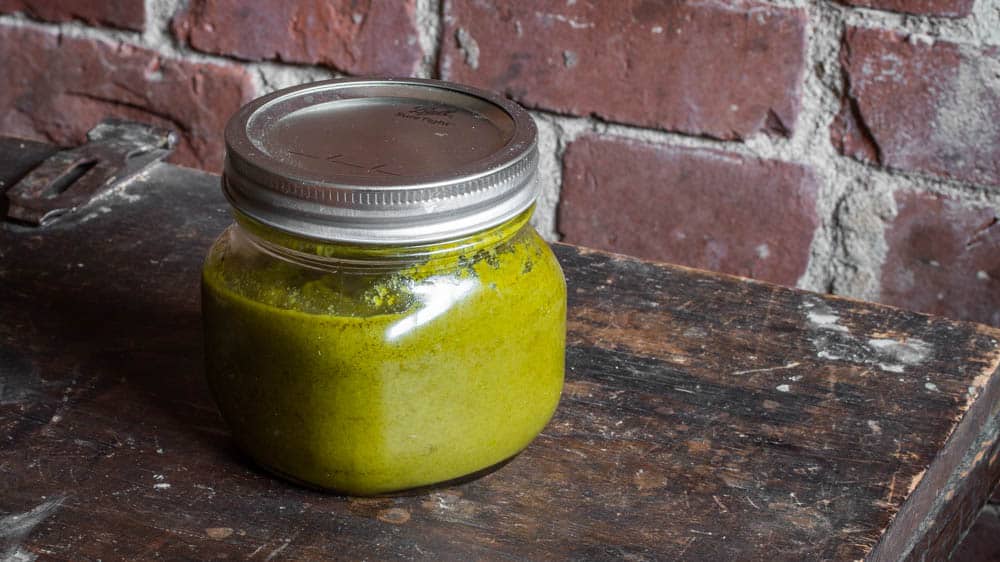
Here's what happens when the first ramps arrive: the leaves and bulbs get separated, but there's a much larger volume of leaves than bulbs when all the ramps are cleaned and processed.
Needless to say, when I cook with ramps at the restaurant I regularly see the bulbs used faster than the leaves, especially if there's an enthusiastic line cook or two working.
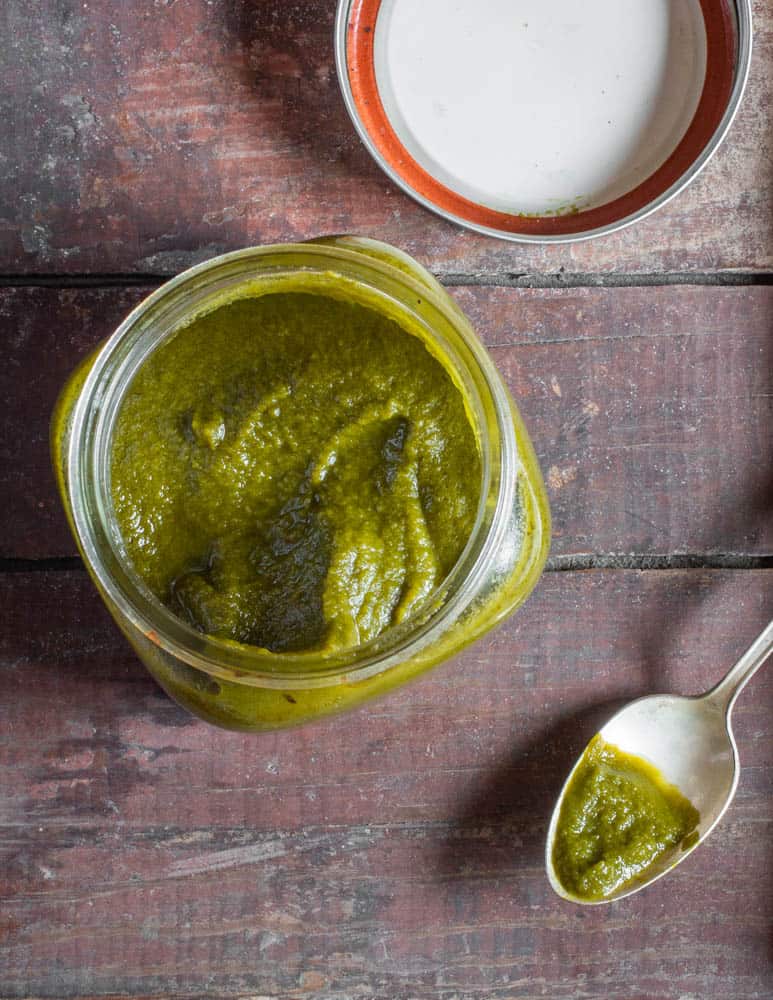
A couple years ago, staring at a couple deep hotel pans filled with leaves and no ramp bulbs left to add to the dishes, I did the most prudent thing I knew: I blanched the leaves en-masse and froze them.
After blanching and freezing, the leaves keep their green color when they get made into a puree, or whatever I'm feeling like making, it also helps to save space in the cooler. One of the things I ended up making with all the frozen leaves was hot sauce, delicious, fermented, green hot sauce.
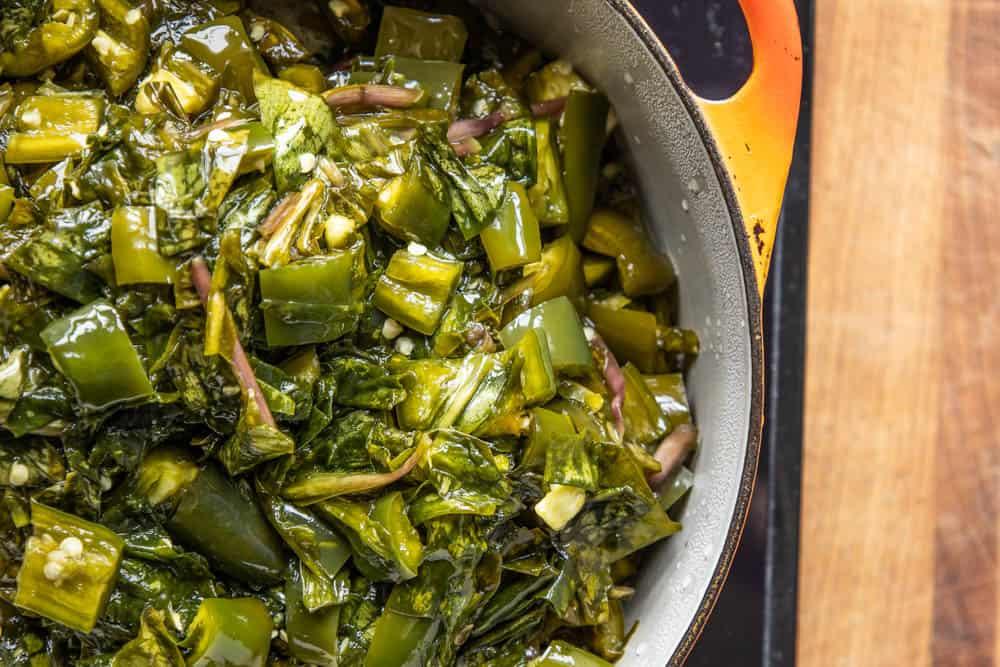
Last year I shared a recipe for a sriracha style hot sauce made with fresno chilis and ramp bulbs. This year, I thought I'd share it's hot cousin: a green sriracha-style sauce made with jalapenos and ramp leaves, minus the bulbs.
It took me couple tries to get the proportions right, but the final version here has a great amount of balance between heat/chili flavor and rampy-ness.
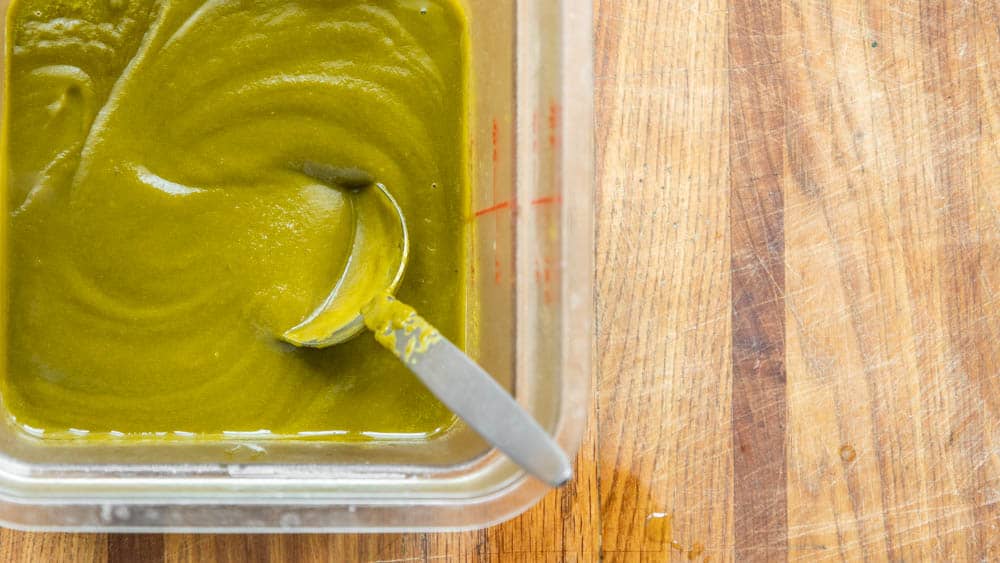
Notes and Variations
Why remove half the seeds?
You may read the recipe and wonder why I say to throw away half of the seeds of the jalapenos and keep the rest. I found that I got a decent amount of heat from only using half of the seeds from the particular jalapenos I was using, but if you like it really spicy, or if the peppers you're using are more mild, use more seeds or supplement with cayenne for a spicier hot sauce, by all means.
Adding ramp bulbs
If you have some ramp bulbs laying around too, they add great flavor to this, but I don't include them in the formal recipe since the point is to focus on the leaves. If you want to use whole ramps in this, add a few tablespoons of chopped bulbs to the jalapenos when you toss them with the salt and sugar before fermenting.
Feel free to experiment, is your sriracha too spicy for you? Add some more pureed ramp greens. Do you like it sweeter? Add some more sugar/sweetener. Want it even rampier? Again, add more pureed ramp greens, just remember to adjust the seasoning for salt and sugar at the end.
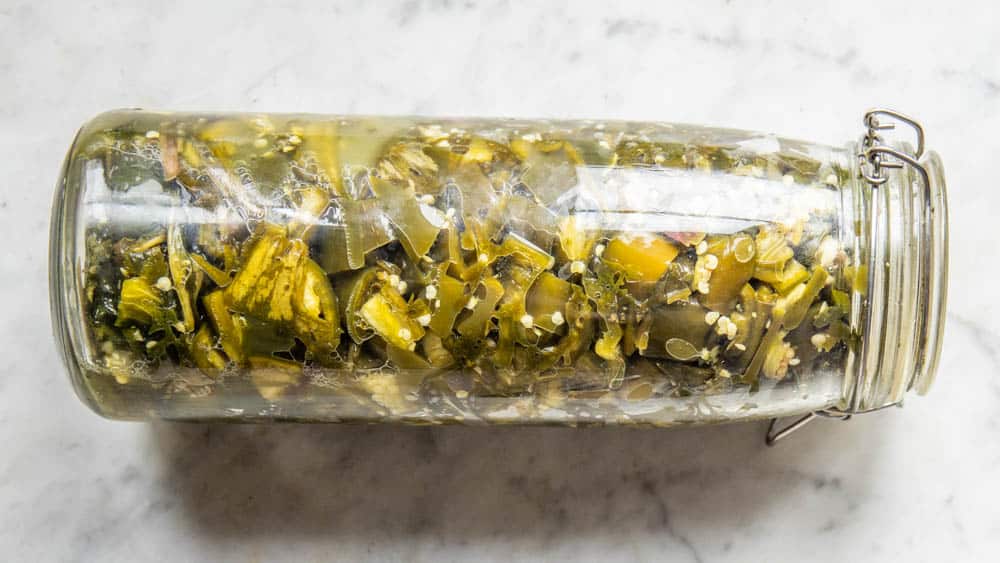
Fermenting in a vacuum sealed bag
While you can do this in a jar, I often use a vacuum bag, which is useful for a clean, scent-free ferment-good if you have a husband or wife who may not want to smell your projects in the kitchen. To do it, put the jalapeno mash in a vacuum bag, press out some air, and seal without using the suction.
Put the bag in a cupboard or counter and check on it, when it starts to inflate, you know it's fermenting, using this method you can also ferment the ramp sriracha for longer as there is no outside air, but you may have to cut off a corner of the bag and burp it to release carbon dioxide once or twice during the process.
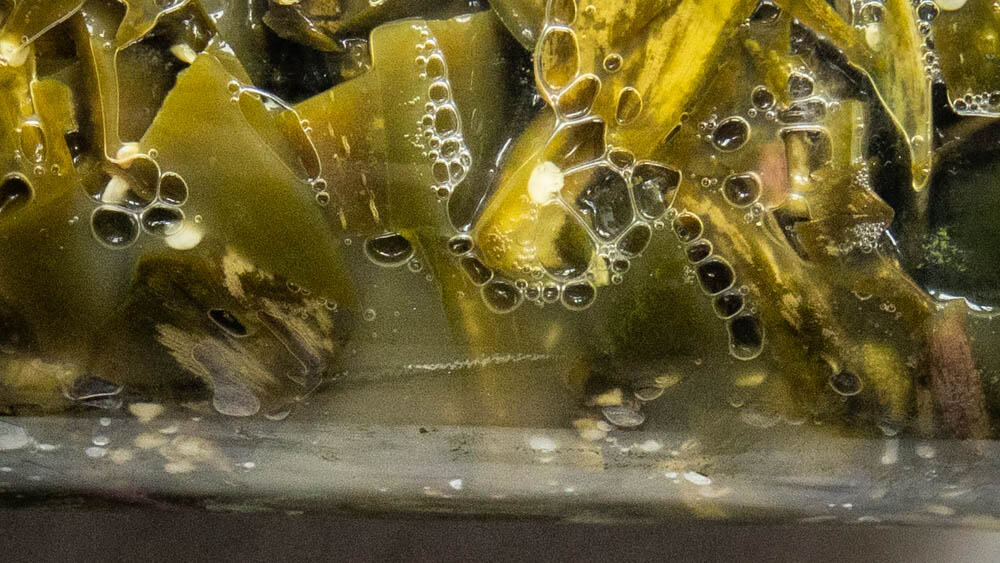
Straining the sriracha / yield
This is important! At the restaurant, I strained this to make a smooth sauce, which is the closest thing you're going to get to the hot sauce you know and love. If you do not have a fine strainer, this is going to make a lot of sauce, as in 6 cups, so consider cutting the recipe in half. Straining the sriracha takes some work, but it's worth it for the smooth texture.
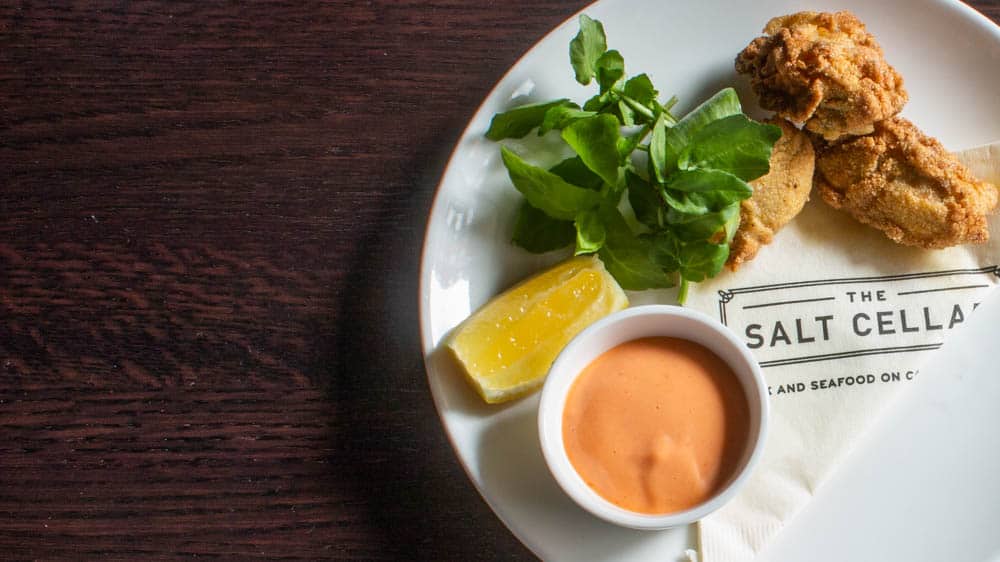
Use Ideas
The sky is the limit here, and most anyone familiar with Sriracha-style hot sauce will have their favorite uses, but here's some you may not have thought of.
- Mix with honey to taste for a sweet-funky-spicy glaze
- Mix to taste with mayonnaise for a creamy-hot condiment
- Add to stir-fries and vegetable sautés
- Serve swipes on a plate off-center with things like fried rice and mild dishes like fried potatoes
Fermented Ramp Hot Sauce (Sriracha)
Equipment
- Highspeed blender
- Vacuum sealer or fermenting vessel
Ingredients
- 3 lb jalapenos
- ½ cup ramp bulbs chopped (optional)
- 50 grams 11 teaspoons kosher salt
- ¾ lb ramp leaves
- 115 grams (½ cup plus 1 tablespoon) maple sugar or turbinado or just white sugar
- ¼ cup flavorless oil for pureeing and finishing
Instructions
- Wearing gloves, coarsely chop the jalapenos, then combine with the ramp leaves salt and sugar.
- Place the ramp-jalapeno mixture in an air tight container, or a similar container covered tightly with plastic wrap, pressing it down onto the surface to remove excess air. Alternately vacuum sealed the mixture. Allow the mixture to ferment for at least five days and up to 14 in a cool, dry place away from light and heat.
- After 5-14 days, Remove the jalapeno mixture and all the accumulated juices and cook on medium heat, covered, working in a well ventilated area or with as many windows open as possible (the fumes will be near weapons-grade) stirring occasionally until very soft and most of the juice has evaporated, about 30 minutes.
- Puree the pepper mixture in a highspeed blender until very smooth, drizzling in the oil to reduce friction in the blender blades, then pass through a chinois strainer and chill (optional, see note).
Video
Notes
Straining the hot sauce
This is so important I'm mentioning it twice. If you do not have a fine strainer, this is going to make a lot of sauce, as in 6 cups, so consider cutting the recipe in half. Straining the sriracha takes some work, but it's worth it for the smooth texture.Nutrition
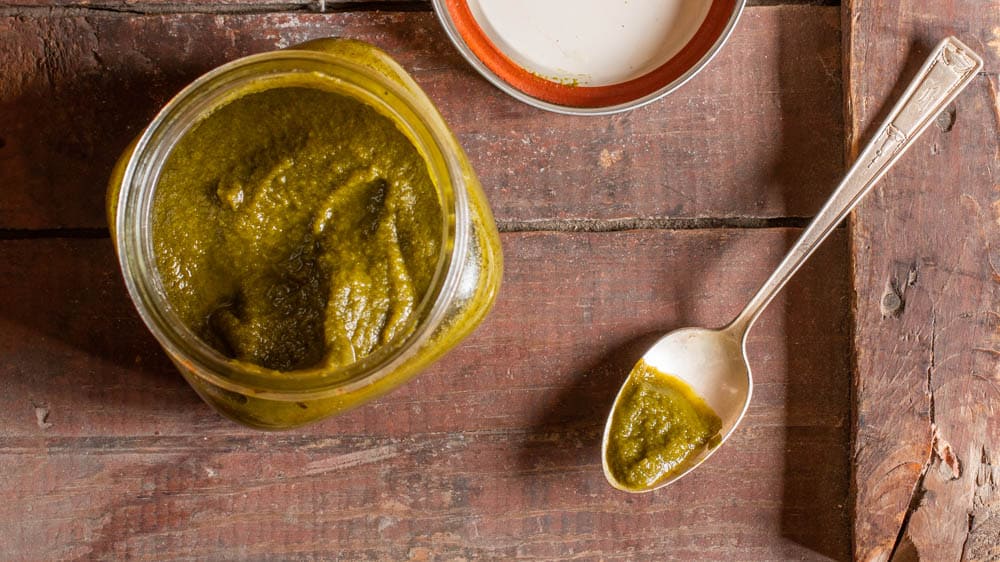

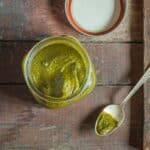
Zach
How long does this last in the fridge? Fermented foods last awhile right?
I'm tempted to try this now that we're in peak ramp season.
Alan Bergo
Hey Zach. The fermentation lowers the pH to such an extent that it’s basically invincible in the fridge. I just checked and the jar in my fridge I use regularly is 2 years old. I have a separate fridge for my ferments.
Daniel
Can you clarify the funky version a bit? Do you just put everything raw in the jar, ferment, then cook? I'm not 100% sure whether the recipe here is for the funky version or not, since it both refers to blanched leaves, but doesn't refer to the final step. Perhaps you can post both versions?
I followed this recipe before (I think for the non-funky version) and loved it! And am sitting on a pile of leaves I plan to make with this.
Alan Bergo
Hey Daniel. Thanks for pointing out that inconsistency. I changed the recipe so that everything is fermented to be more shelf stable, and I forgot to remove the blanched part. If you want to still blanch the leaves and then puree them with just the fermented jalapenos, that will give you the older version, but I much prefer everything fermented together.
Jess
I'm assuming this is able to be canned in jars like anything else for longer term storage?
Alan Bergo
Hi Jess, sorry this comment got away from me here. I haven't yet tested the PH of the sriracha here. Since it doesn't have any added vinegar, I assumer it wouldn't be good for waterbath canning, but you could definitely pressure can it since food with a PH higher than 4.6 can be canned if the internal temperature rises above 248F. I keep it in the freezer for long term storage. You could always add a dash of vinegar and check the PH if you want to water bath can.
Heidi
I have recently started dabbling with fermenting. This is such a great recipe. I can't wait to try it. Between hubby's love of sriracha and my daughters love of jalapenos plus the acres of ramps I have growing in the woods behind my house at the moment. This is perfect. Thanks for sharing!
Alan Bergo
Thanks, you will love this recipe.
Jackie Kanthak
Help- I'm trying to understand this the undressmenting process. I have done Kombucha and Kimchi beforere so am familiar. In this you state an "air tight container. Currently I have mine in a 1/2 gallon mason jar with the lid on and plastic wrap inside pushed snugly against the jalapenos. Is this correct or should it have exposure to the air? I usually cover things with a coffee filter.
Place the mixture in an air tight container, then cover tightly with plastic wrap, pressing it down onto the surface to remove excess air. Allow the mixture to ferment for five days in a cool, dry place away from light and heat.
Since I have it fixwing and the ramps waiting your assistance would be greatly appreciated.
Alan Bergo
You will be fine with a mason jar. I use different containers that aren't really applicable for home use since I make this in 10lb batches for the restaurant. Just keep an eye on them so they don't get moldy, which shouldn't be an issue unless you forget about them.
Rasul
This is an awesome recipe and i am definitely going to try it! Worth noting that the heat doesn't come from the seeds, it comes from the pith that you are throwing away... That is placental material and it gemerates capsaicin in order to protect and preserve the seeds. Seeds bring a small amount of lipids, insoluble fiber, and bitterness, but nothing really worthwhile. They are hot only because of contact with the pith.
Woozie
Thank you for this clarification! This is a point that is so very often overlooked, or outright misunderstood!
Peter
Chef!!!!
You need to write a book!!
I'm a chef here in Montreal and follow your blog on and off
I belong to an outdoor community that is involved in primitive lifestyle.
Foraging is an activity that is on the periphery of our activities and had the opportunity to hunt for mushrooms.
I got the fever for more foraging and cooking on fire but can't find any resource material.
Write a book dude
I'm off at the end of the month to live 7 months in a homemade shelter in northern Ontario and learn trapping hunting bow building etc.....
Let me know if ya do workshops or involved in anything else
You inspired this old chef
Regards
Peter
Alan Bergo
Thanks Peter. Unfortunately, I'm super busy with the restaurant right now, but the book will happen someday. There is a lot of stuff that has to happen, and hoops I have to go through to get a nicely published book though, big publishing houses like Phaidon require you to have a certain amount of street cred, which I'm still working on. Someday.
fred
add lemon juice or your favorite vinegar to.keep the greens from oxidizing.